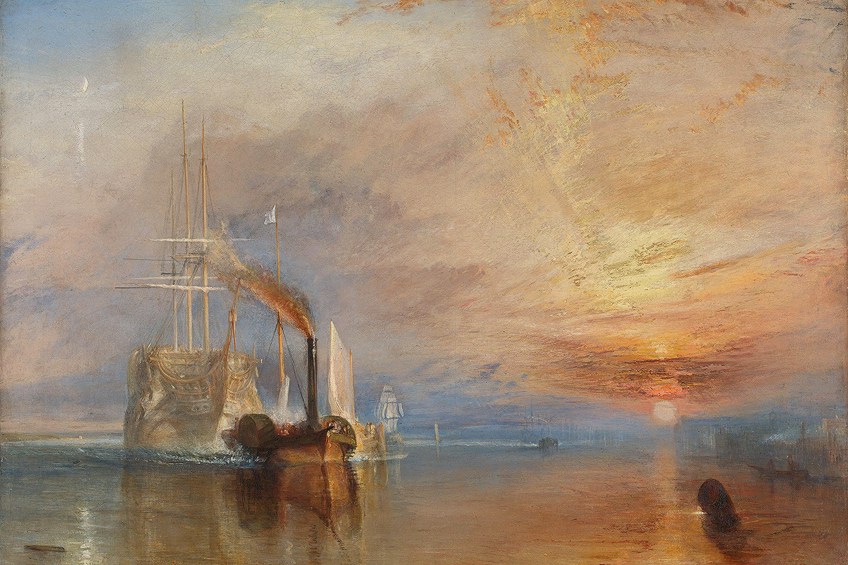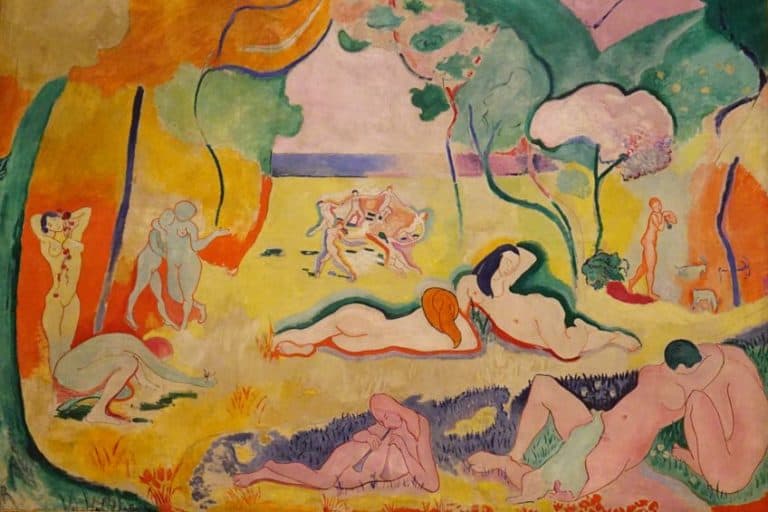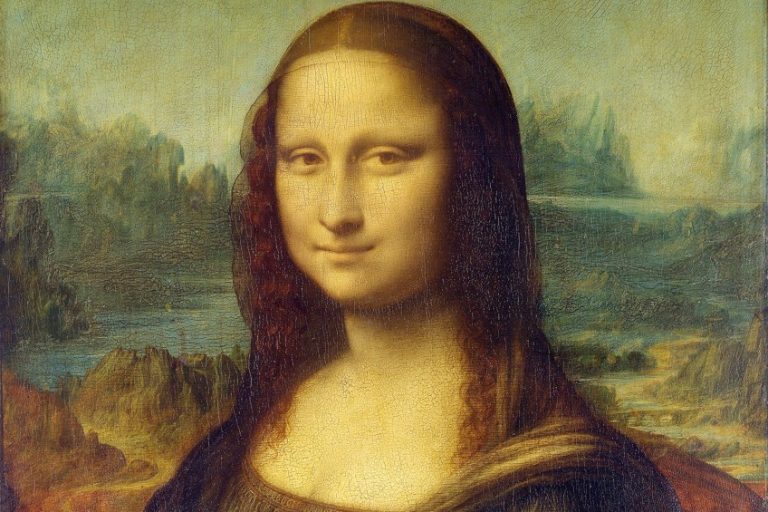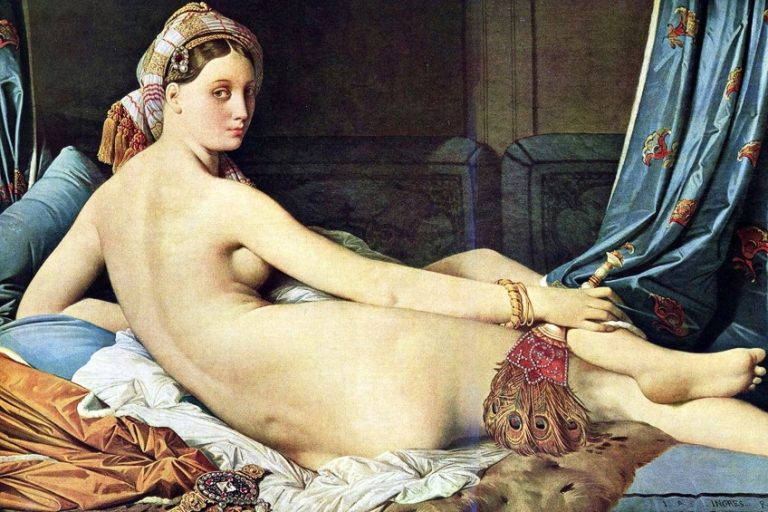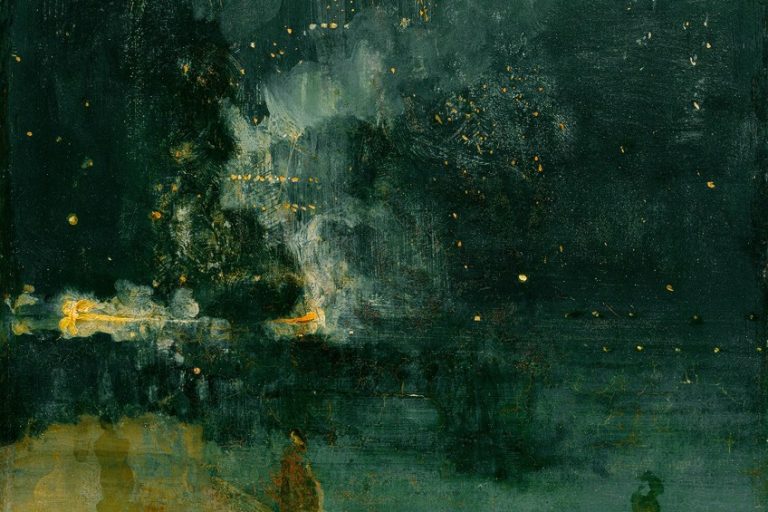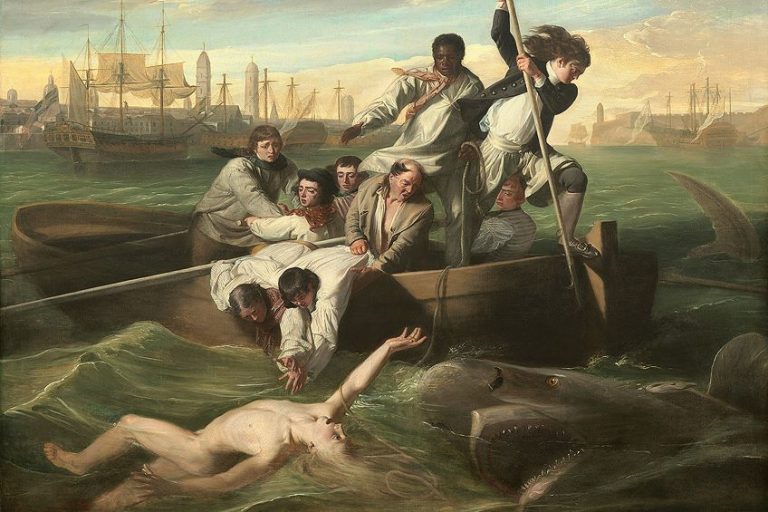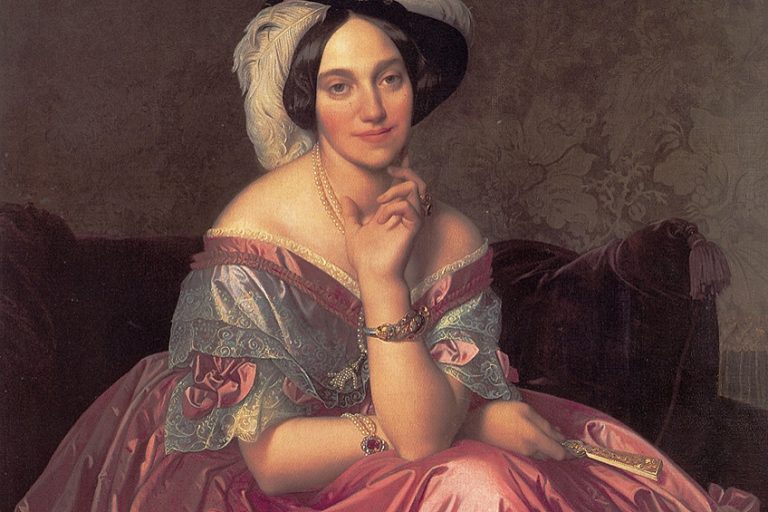Famous Ocean Paintings – World-Renowned Paintings of the Sea
For some, the ocean means sustenance, adventure, and opportunities. However, others see it as a cruel mistress that is dangerous and unpredictable. The truth is, the ocean is all of these things. It is multifaceted, and that is why it has been such a great source of inspiration for artists throughout the ages. In this article, some of the most beloved Ocean paintings in art history will be discussed.
A Brief Introduction to Paintings of the Ocean
The ocean is a significant part of many cultures around the world. For many coastal regions, the sea was a way people could feed their families and make a living. Therefore, it became sacred and was often worshipped in the form of a deity. We see this all over the world such as Poseidon, the ancient Greek god of the sea, or Mazu, the goddess of the sea in Chinese mythology.
It is hard to pinpoint when people first started to create artwork that celebrated the ocean. Many ancient artifacts from around the world have been found with sea motifs on them. Scrolls dating back to the Song dynasty (960-1279) in China were found with dedicated paintings of the sea on them.
This, along with scrolls from Japan that date back to the 1300s, has led art historians to believe that paintings of the ocean were popular in the East hundreds of years before they were in the West.
It is only in the 16th century that the emergence of famous ocean artwork can be seen in Europe. Seascapes become particularly relevant during the Dutch Golden Age (1588-1672). During this time, the Netherlands was one of the wealthiest countries in the world due to its widespread trade and naval prowess. For this reason, there are numerous famous paintings from this time that depict magnificent naval ships amid battle.

In the 1800s, during the Romantic art movement, paintings of the sea rose in popularity once more. Traveling via ship led to the discovery of new, untouched lands such as North America. This meant that the ocean became synonymous with exploration and hope. Many artists who made the journey to foreign lands documented their time on the sea through paintings, which they sold upon their return.
Shortly after the Romantics, artists of the Impressionism movement (1867-1886) were also captivated by the sea. Many spent most of their day painting the ocean en plein air from beaches or piers. What fascinated the Impressionists most was the behavior of light and how it changed nature.
Therefore, the ocean was an endless supply of inspiration, as it changed dramatically depending on the season or time of day.
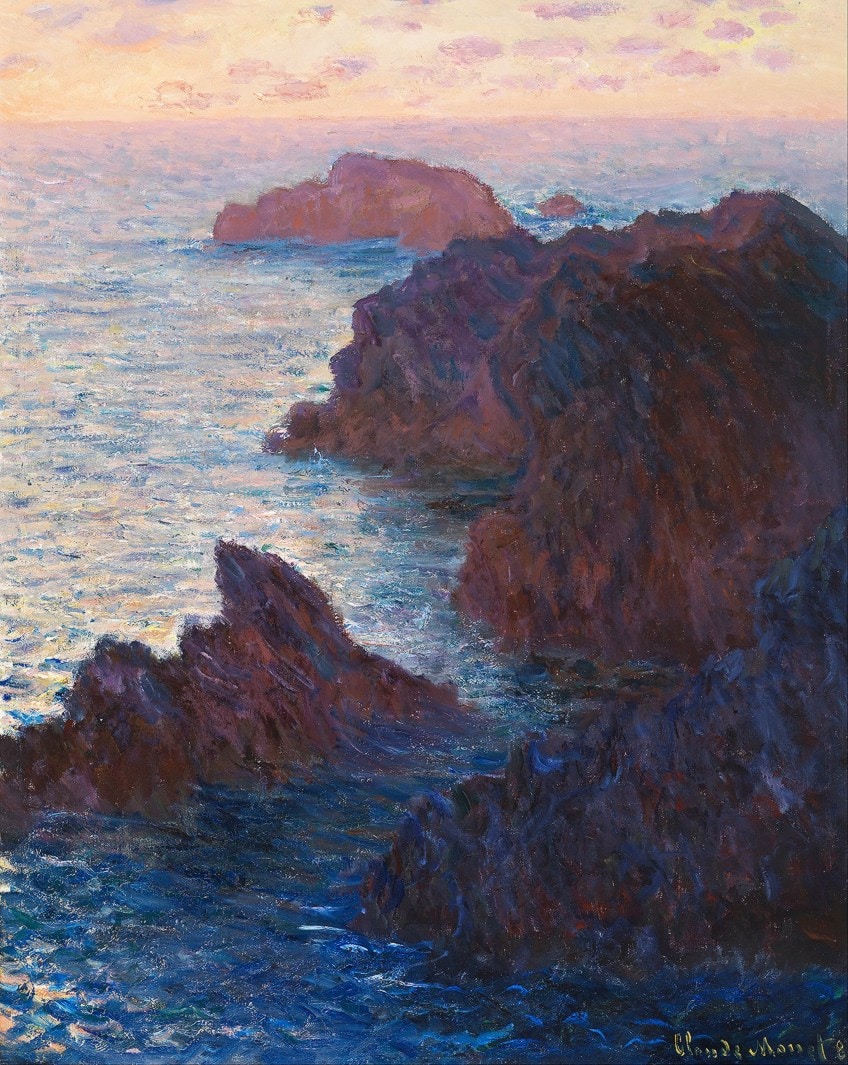
The creation of famous ocean paintings did not stop with the Impressionists. On the contrary, countless later artists were also stimulated by the beauty of the sea, which encouraged them to create their own paintings of the ocean.
Although stylistic influences may change as time goes on, one thing will remain constant: Artists will always be compelled to harness the dynamic attraction of the ocean in their artworks.
Famous Ocean Paintings
Some of the most celebrated artists throughout history have been inspired by the ocean. Often, these famous ocean paintings do much more than paint a pretty picture. How the artist chooses to paint the sea can tell the viewer a lot about the time in which it was painted. In many cases, the sea can also reflect the inner workings of the artist.
Christ in the Storm on the Sea of Galilee (1633) by Rembrandt
| Artist | Rembrandt van Rijn (1606 – 1669) |
| Date Painted | 1633 |
| Medium | Oil on canvas |
| Dimensions (cm) | 160 x 127 |
| Where It Is Currently Housed | Stolen in 1990 |
| What It Is Worth | $500 million |
Rembrandt is one of the most acclaimed painters of the Dutch Golden Age. He is known for his flawless use of the chiaroscuro technique, in which artists create extreme contrasts between light and shadow. Rembrandt is not who one would typically include in a list of ocean painters.
This is because “Christ in the Storm on the Sea of Galilee” is the only seascape that Rembrandt ever painted.
Rembrandt was trained by Pieter Lastman, a famous Dutch painter known for his academic artworks. Lastman’s influence can be seen in Rembrandt’s early works through his choice of subject matter. Christ in the Storm on the Sea of Galilee depicts the biblical story of Jesus using his power to calm a storm in Matthew 8:23.
In Rembrandt’s dramatic portrayal, the waves crash against the boat mercilessly. He paints each figure’s face in immense detail to show the terror they are experiencing. Only Jesus has a serene expression. Viewers may also note that the disciple looking directly out of the painting bares a striking likeness to the artist himself.
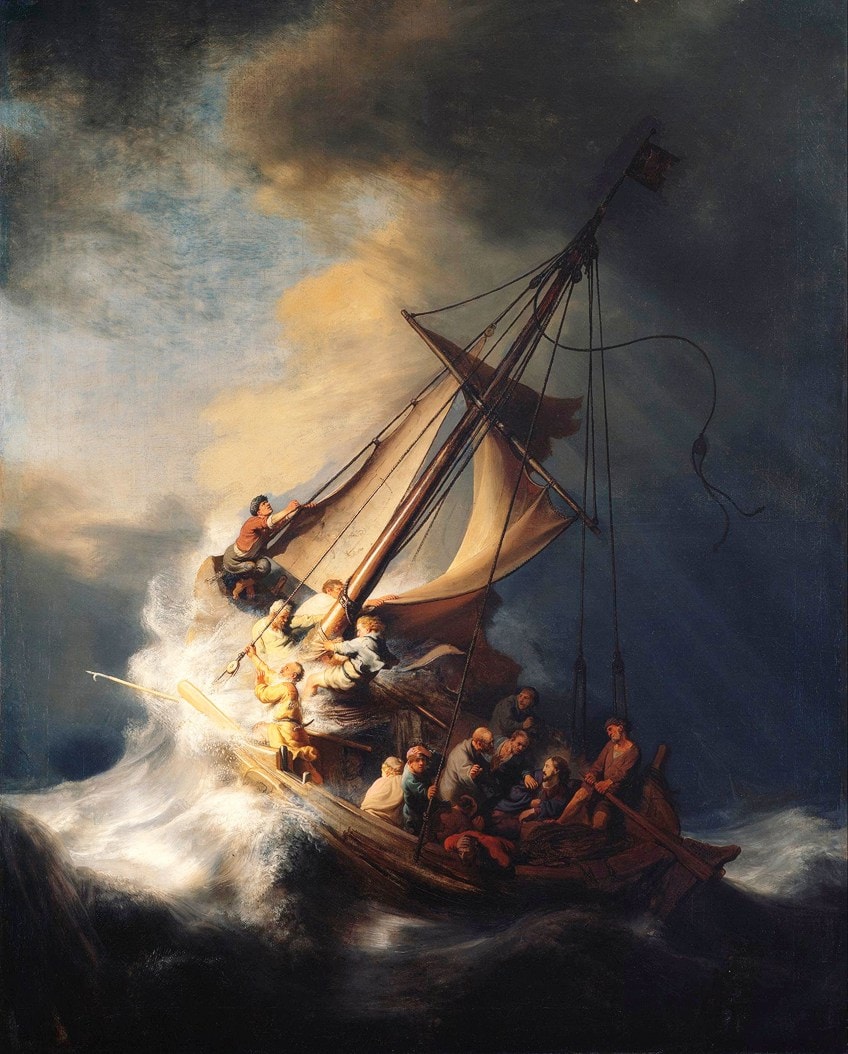
Monk by the Sea (c. 1808 – 1810) by Caspar David Friedrich
| Artist | Caspar David Friedrich (1774 – 1840) |
| Date Painted | c. 1808 – 1810 |
| Medium | Oil on canvas |
| Dimensions (cm) | 172 x 110 |
| Where It Is Currently Housed | Alte Nationalgalerie, Berlin, Germany |
| What It Is Worth | Uncertain |
Caspar David Friedrich was a famous German painter of the Romantic era. His contributions to the art world are evident through the lasting popularity of his work, as well as the countless artists who credited him as an inspiration. Due to his preferred composition style, it is often quite easy to tell whether or not a painting belongs to him. However, Monk by the Sea is unique.
Monk by the Sea contains Friedrich’s signature Rückenfigur (a figure gazing out over a vast panorama), but the rest of the composition is decidedly different from any of his other works. The sky in the painting takes up about three-quarters of the canvas, leaving only a small space for the land and the sea. The tiny figure looks out in quiet contemplation over a gloomy scene.
Friedrich imparts a feeling of calm yet almost stifling loneliness through this famous ocean artwork.

The Raft of the Medusa (c. 1818 – 1819) by Théodore Géricault
| Artist | Théodore Géricault (1791 – 1824) |
| Date Painted | c. 1818 – 1819 |
| Medium | Oil on canvas |
| Dimensions (cm) | 490 cm x 716 |
| Where It Is Currently Housed | The Louvre Museum, Paris, France |
| What It Is Worth | Uncertain |
Théodore Géricault was a French artist who had a short but significant career. Géricault died at the age of 32 after suffering from tuberculosis and lasting injuries caused by a riding accident. Although he was not able to reach his full potential, the artworks he created during his lifetime are of considerable worth.
The Raft of the Medusa (c.1818-1819) is without a doubt Géricault’s most famous ocean painting. It depicts the aftermath of the wreck of the Medusa, a French naval ship, which sank off the coast of Senegal. Those that survived the wreck endured a traumatic 13 days at sea, which resulted in cannibalism and other horrible acts of desperation.
It is said that Géricault stole bodies from morgues to use as models for this painting.
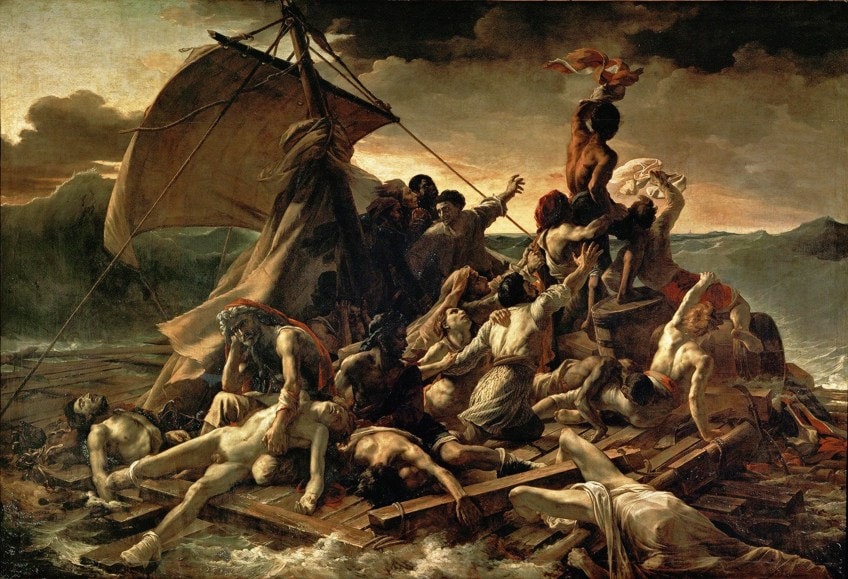
The Great Wave Off the Coast of Kanagawa (1831) by Katsushika Hokusai
| Artist | Katsushika Hokusai (1760 – 1849) |
| Date Painted | 1831 |
| Medium | Ink on paper (woodblock print) |
| Dimensions (cm) | 38 x 26 |
| Where It Is Currently Housed | As it was a print, copies of The Great Wave can be seen in many museums and art galleries around the world |
| What It Is Worth | Estimated at $150,000 |
Katsushika Hokusai’s artwork is praised by art critics in the East as well as the West. By subtly merging the characteristics of both hemispheres, he achieved an art style that was eye-catching and completely his own. This, along with the plethora of successful paintings he created during his lifetime, is why he is still spoken so highly of today.
Creating paintings of Mount Fuji was Hokusai’s favorite pastime. Additionally, the ocean has a special place in Japanese culture, so it was also frequently featured in his artworks.
Many Western art enthusiasts view The Great Wave Off the Coast of Kanagawa from left to right, however, it was originally intended to be scanned from right to left, as this is the way in which Japanese is read. This adds a feeling of imminent danger to the painting.

The Fighting Temeraire, tugged to her last Berth to be broken up (1839) by J. M. W. Turner
| Artist | J. M. W. Turner (1775 – 1851) |
| Date Painted | 1839 |
| Medium | Oil on canvas |
| Dimensions (cm) | 90.7 cm x 121.6 |
| Where It Is Currently Housed | National Gallery, London, England |
| What It Is Worth | $8.6 million |
J. M. W. Turner was another artist from the Romantic art movement. He is one of the most famous ocean painters from the United Kingdom. Turner often used his art to make a statement about how he felt about certain issues. This is evident in some of his most famous ocean paintings such as The Fighting Temeraire, tugged to her last Berth to be broken up, and the 1840 painting, The Slave Ship. Turner is known for his paintings of naval ships, with The Fighting Temeraire being his most popular one. It features the HMS Temeraire (known for having fought in the Batte of Trafulga) as it is being tugged out to sea to be destroyed.
The grand battleship is juxtaposed with the small modern tugboat, showing Turner’s disappointment at the bland, practicality of the future.
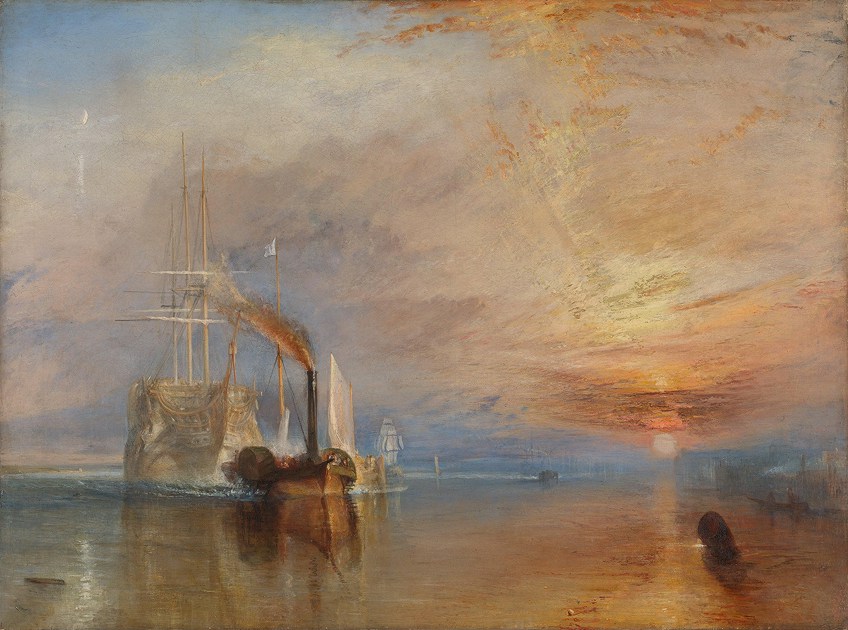
The Ninth Wave (1850) by Ivan Aivazovsky
| Artist | Ivan Aivazovsky (1817 – 1900) |
| Date Painted | 1850 |
| Medium | Oil on canvas |
| Dimensions (cm) | 332 x 221 |
| Where It Is Currently Housed | The State Russian Museum, Saint Petersburg, Russia |
| What It Is Worth | $3 million |
Ivan Aivazovsky is thought of as one of the greatest Russian artists of all time. Aivazovsky grew up in Feodosia, a small coastal town on the Black Sea. Therefore, he always had a strong connection with the ocean. After many of his marine paintings became popular, he was hired as the official painter of the Russian navy. The Ninth Wave is a visual representation of the old maritime expression of the same name. This saying dictates that when there are multiple sets of large waves, the ninth wave will be the largest and most dangerous.
Although Aivazovsky’s famous ocean painting portrays a tumultuous sea, he keeps the colors warm and light to add an element of hope to the painting.

The Icebergs (1861) by Frederic Edwin Church
| Artist | Frederic Edwin Church (1826 – 1900) |
| Date Painted | 1861 |
| Medium | Oil on canvas |
| Dimensions (cm) | 286 x 164 |
| Where It Is Currently Housed | Dallas Museum of Art, Dallas, United States |
| What It Is Worth | $2.5 million |
Frederic Edwin Church was an American painter who was a prominent member of the Hudson River School. Rather than being an actual school, this was an art movement that combined Romanticism with the North American landscape. Church became interested in the art movement after being mentored by its founder Thomas Cole, who painted the iconic landscape The Oxbow (1836).
In 1859, Church and some of his friends took a trip up to eastern Canada. Whilst in Newfoundland and Labrador, he first saw the icebergs of the Arctic Sea. He became enamored by them, creating over 100 drawings of them during their month-long stay.
He even endured seasickness by venturing out in little boats so that he could see them up close. He began working on “The Icebergs” upon his return.
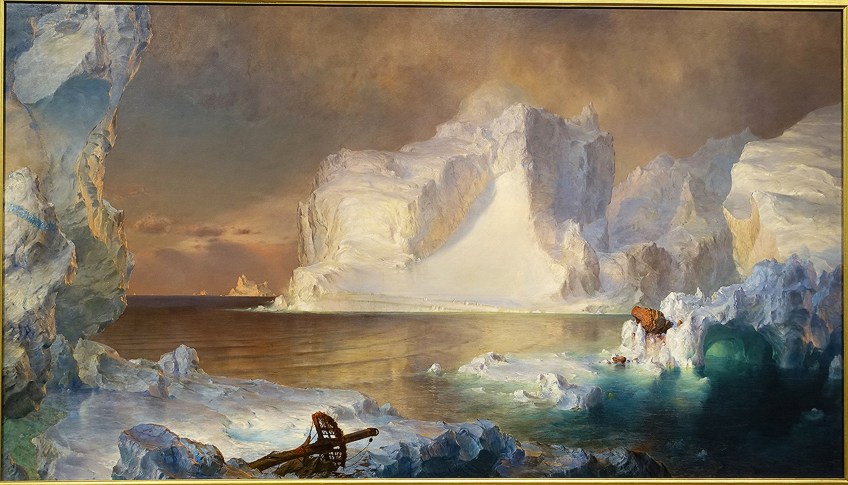
Eternity (c. 1865 – 1869) by Gustave Courbet
| Artist | Gustave Courbet (1819 – 1877) |
| Date Painted | c. 1865 – 1869 |
| Medium | Oil on canvas |
| Dimensions (cm) | 79 x 65 |
| Where It Is Currently Housed | Museum and Art Gallery, Bristol, England |
| What It Is Worth | Estimated at $2.2 million |
Gustave Courbet was a pioneer of the French Realism movement, which began during the 1840s and was popular until the 1880s. His early career is defined by some of his most famous and politically implicit paintings, such as The Stone Breakers (1849). However, he predominantly created paintings of nature during the latter half of his artistic career.
Although Courbet created many paintings of the sea throughout his art career, “Eternity” is not like the rest.
Firstly, he did not disclose the location of the beach in the painting, as was typical of his other seascapes. Secondly, Courbet created this painting on a black canvas (as was popular in previous art movements) in order to add a moody atmosphere to the painting.

Impression, Sunrise (1872) by Claude Monet
| Artist | Claude Monet (1840 – 1926) |
| Date Painted | 1872 |
| Medium | Oil on canvas |
| Dimensions (cm) | 63 x 48 |
| Where It Is Currently Housed | Musée Marmotten Monet, Paris, France |
| What It Is Worth | Estimated $250 to 350 million |
Claude Monet was a French Impressionist artist known all over the world for his beautiful nature paintings. Monet would often fixate on a particular subject matter, creating numerous paintings of it in various lights. The ocean was no exception, and he produced countless paintings of the sea throughout his lifetime. Impression, Sunrise, known as Impression, Soleil Levant in French, is Monet’s most famous marine painting. It is also one of great significance to the artist as it portrays the French town he grew up in, Le Havre.
Due to the rough brushstrokes, an art critic stated that it was just that, an “impression” – thus earning the Impressionist art movement its name.

The Gulf Stream (1899) by Winslow Homer
| Artist | Winslow Homer (1836 – 1910) |
| Date Painted | 1899 |
| Medium | Oil on canvas |
| Dimensions (cm) | 125 x 72 |
| Where It Is Currently Housed | The Metropolitan Museum of Art, New York City, United States |
| What It Is Worth | Uncertain |
Winslow Homer was a famous, self-taught ocean painter from the United States of America. He loved to create paintings of the ocean, and these are some of his most famous artworks. These include Moonlight (1874), The Herring Net (1885), and Sunlight on the Coast (1890).
Homer crossed the gulf stream many times on his travels to the Bahamas. It was on one of these trips that he got his inspiration for The Gulf Stream. The painting is a scene of despair – a boat with no sail, a waterspout in the distance, sharks all around, and no reserves in sight.
Before exhibiting the painting, Homer added a ship in the distant background as a glimmer of hope.

In this article, we took you through just a few of the most famous ocean paintings in art history. However, there are many more incredible paintings of the sea to be discovered. If you are an ocean lover, be sure to do some of your own research to discover even more of the beautiful marine paintings that exist.
Frequently Asked Questions
Who Was Famous for Paintings of the Sea?
There are a number of artists who had a penchant for painting the sea. Often, these artists grew up in coastal towns or found solace there later on in life. Frequent ocean painters include Caspar David Friedrich, Claude Monet, and J. M. W. Turner.
What Are Paintings of the Ocean Called?
Paintings of the ocean are often called seascapes or sometimes even marine art. Within this broad category, there are also smaller ones such as naval art, beach art, and harbor scenes. Therefore, there is a lot of variety in the genre of marine art.
Isabella studied at the University of Cape Town in South Africa and graduated with a Bachelor of Arts majoring in English Literature & Language and Psychology. Throughout her undergraduate years, she took Art History as an additional subject and absolutely loved it. Building on from her art history knowledge that began in high school, art has always been a particular area of fascination for her. From learning about artworks previously unknown to her, or sharpening her existing understanding of specific works, the ability to continue learning within this interesting sphere excites her greatly.
Her focal points of interest in art history encompass profiling specific artists and art movements, as it is these areas where she is able to really dig deep into the rich narrative of the art world. Additionally, she particularly enjoys exploring the different artistic styles of the 20th century, as well as the important impact that female artists have had on the development of art history.
Learn more about Isabella Meyer and the Art in Context Team.
Cite this Article
Isabella, Meyer, “Famous Ocean Paintings – World-Renowned Paintings of the Sea.” Art in Context. November 11, 2022. URL: https://artincontext.org/famous-ocean-paintings/
Meyer, I. (2022, 11 November). Famous Ocean Paintings – World-Renowned Paintings of the Sea. Art in Context. https://artincontext.org/famous-ocean-paintings/
Meyer, Isabella. “Famous Ocean Paintings – World-Renowned Paintings of the Sea.” Art in Context, November 11, 2022. https://artincontext.org/famous-ocean-paintings/.


